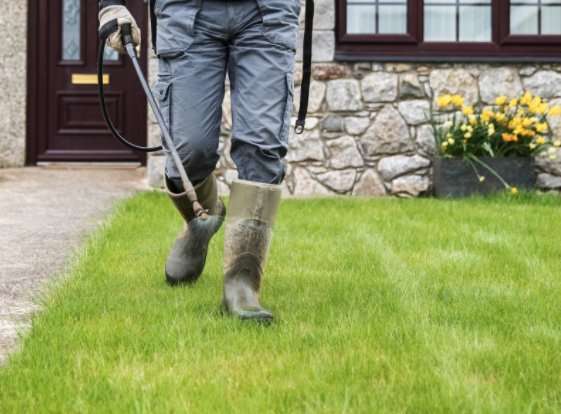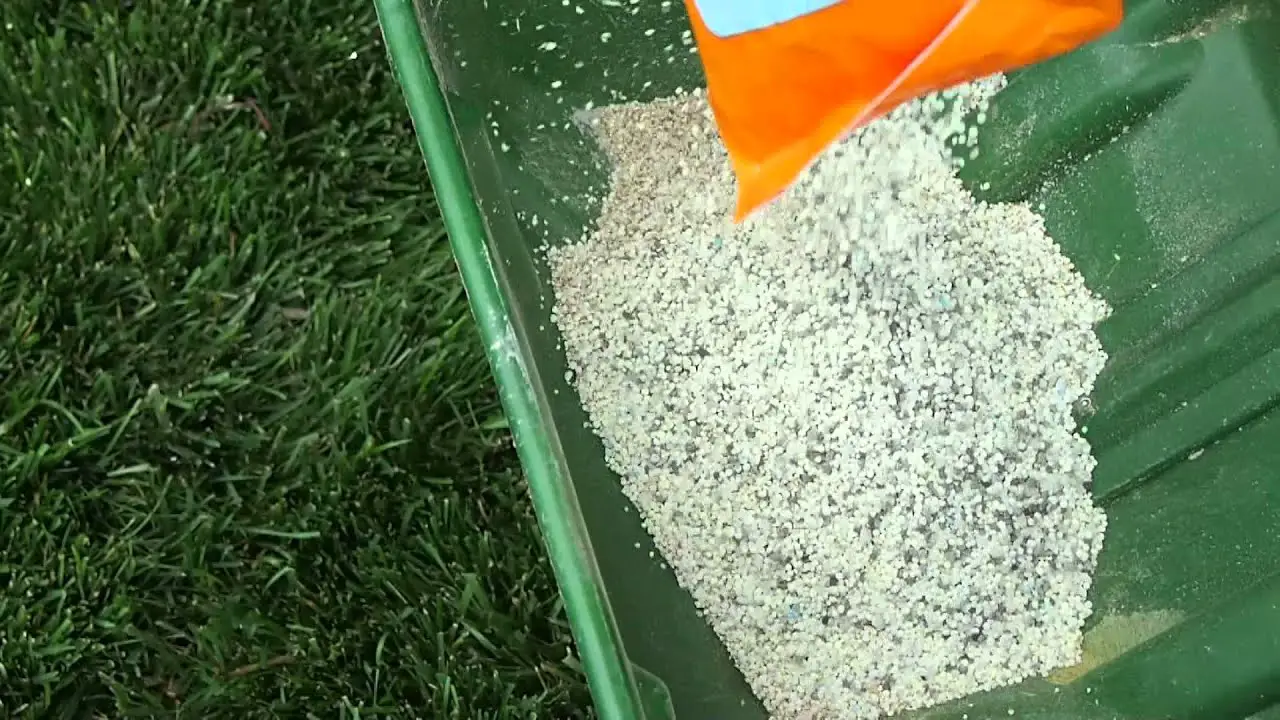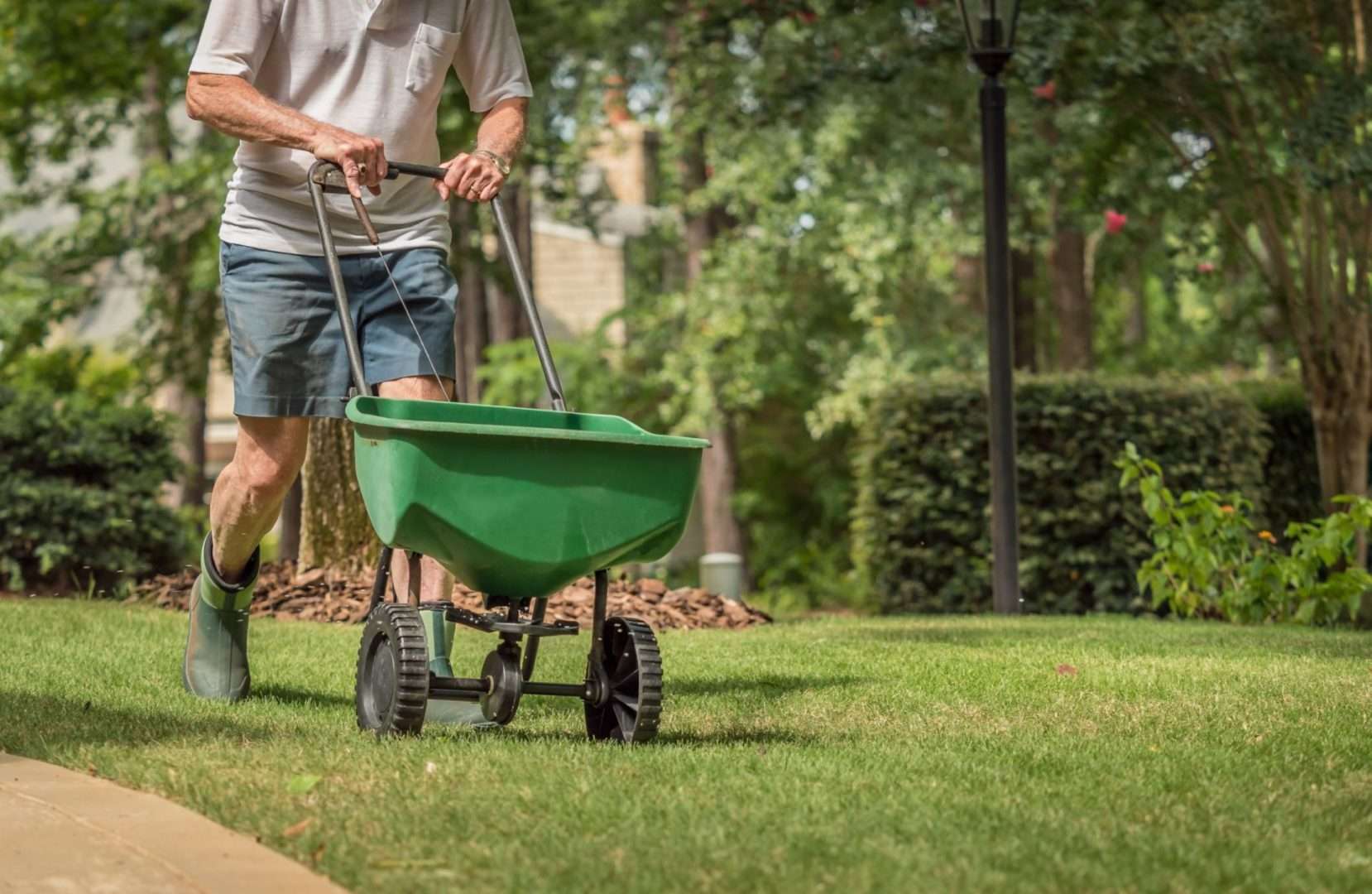When Should You Apply Iron Supplements To Your Lawn
The general rule is that you should use iron supplements on your lawn in the spring. Of course you can apply iron supplements at almost any time of year, but iron will deliver the best results when applied to your lawn when air temperatures are between 40 and 80 degrees Fahrenheit. The ideal air temperature is in the 60s or 70s. This is why Iron application during the heat of summer may not be as effective or deliver the desired results its too warm out.
Always remember to read the instructions to make sure you are using the supplement properly. Remember that you want to avoid overdoing your lawn with iron.
What Do You Need To Pay Special Attention To When Reseeding Your Lawn
To reseed your lawn, you dont have to completely redo everything. Often, spots recover well and its easier and more enjoyable than reseeding the entire area. Plus, you can still walk on the rest of the lawn, which is a big advantage. Because this also makes watering much easier.
But so you dont have to fret any further, weve put together what you should definitely look out for when reseeding lawns.
| Material |
When To Fertilize Lawn
Knowing when to fertilize your lawn depends on how often you plan to apply it. If you fertilize once a year, do it around Labor Day thats when lawns absorb the most nutrients. For biannual fertilizing, add a second application the middle of October.
There are exceptions to this timeline depending on climate and soil types, so adjust if your lawn is not retaining enough nutrients. In the spring, if you feel the need, spread a little fertilizer to help the greening process.
You May Like: How To Get Rid Of Violets In Yard
Fertilizing Schedule For Home Lawns
This lawn is damaged as a result of excessive spring fertilizer applications.
Two important factors to consider when fertilizing lawns are how much and when to apply. About three pounds of nitrogen per 1,000 square feet per growing season is suggested for most full-sun lawns in northern Illinois . Split into two or three applications, with each single application of nitrogen being about one pound per 1,000 sq. ft. About half as much nitrogen is suggested for shade lawns. Percent nitrogen in the bag and size of the lawn are calculation variables as shown below.
When And How To Fertilize New Grass

If you’re starting a new lawn from seed, sod or plugs or you’re doing bare lawn spot repair a starter fertilizer helps grass get the perfect start. Unlike established lawns, new grass benefits from extra phosphorus, an essential plant nutrient that supports strong, deep roots. Some states only allow phosphorus-containing lawn fertilizers on new grass, so check with your county extension office if you’re unsure.
On fertilizer products, phosphorus is the middle number in the N-P-K ratio usually “0” in normal lawn fertilizers. But with Pennington UltraGreen Starter Fertilizer 22-23-4, you get an ideal ratio of nitrogen, phosphorus and potassium, plus other essential lawn nutrients, including iron for deep green color. This premium fertilizer blend starts feeding new grass immediately and keeps feeding it for up to three months.
Always follow guidelines for the best time to plant grass seed for your region and grass type, then fertilize accordingly. For seed or plugs, apply fertilizer with a regular lawn spreader before you plant. If you’re starting a lawn with sod, fertilize after your sod is in place.
With any new lawn area, avoid using crabgrass preventer fertilizers or weed & feed fertilizers within four weeks before planting time. After seeding, wait until your new grass gets established and you’ve mowed your lawn at least three times.
Weed & feed fertilizers kill tough weeds and feed your lawn.
Don’t Miss: When To Overseed Fescue In Georgia
Be Wary Of Fertilizer Application Rates
Across the board, most fertilizer manufacturers are overzealous about their recommended dose and feeding schedule. Start light with half the recommended amount and rate of fertilizer. You can reapply if you don’t like the results. Over a season or two, you’ll get a clear sense of how much it takes to get a healthy lawn.
A healthy lawn will be a relatively light shade of bright green. A lawn that is a deep, almost blackish green, has been very heavily fertilized. The dark green color comes from a lot of nitrogen-based fertilizer used on the lawn. It is highly likely that some of that fertilizer has run off into the streets, storm sewers, and has made its way into local streams and rivers.
How To Fertilize Your Lawn
Before you fertilize, check your local weather forecast. Plan to fertilize just before a day of light, steady rain. Youll save water and your grass will be well-fed. Using an aerator to make small holes in your lawn before you fertilize can make it easier for fertilizer and water to reach the roots of the grass.
Fertilizers are typically grouped as granular, water-soluble and organic, and you can choose from walk-behind, handheld, drop or liquid spreaders to apply fertilizer to your lawn.
When trying to determine how much fertilizer to use on your lawn, remember that every eight steps is roughly equal to 10 feet. For size reference, compare your lawn to the size of a tennis court, which is 78 feet long and 36 feet wide.
It helps to break up your lawn into easily measurable sections. Sketch out a rough drawing of your yard and break it into a few large squares, rectangles, circles and triangles.
- For squares and rectangles, measure the length and the width, then multiply those two numbers to get your area.
- For circles, measure half the distance across the center of the circle then multiply by 3.14.
- For triangles, measure the base and the height, multiply the two numbers, then divide by two.
- Once you have the areas determined for each shape, add up the areas to get the total area of your lawn.
Choose from broadcast, handheld and drop spreaders to apply fertilizer to your lawn. Find recommendations for the proper spreader settings on the label of most fertilizers.
You May Like: Lawn Mowing Simulator Ps4 Release Date
Keeping Up With Fertilizing Schedules
You may love your lawn so much that you print out this blog post and hang it on your fridge. You could even set up reminders in your digital calendar to notify you when its time to fertilize for the season. But if you prefer an easier alternative, sign up for our Monthly Lawn Tips emails. Well send you an email each month with tips on fertilizing, mowing and dealing with pest or disease problems in your lawn.
What Kind Of Lawn Should I Reseed
The right variety to reseed is essential. While there is an abundance of reseeding available in stores, identifying the right one from them is not exactly easy. Keep in mind that if you choose the wrong grass, the young blades of grass may not grow properly.
It is advisable to know what type of grass is already in your yard if you want to reseed.
Many amateur gardeners also complain about a noticeable difference between reseeding and the original lawn. Although the freshly seeded lawn grows, it has a difference in color or is less or more dense. Thus, the beautifully maintained lawn quickly resembles a carpet of spots. If you have no idea, it is best to visit a hardware store and get advice there. Otherwise, we have created a great overview of lawn seeds in this article. Here you can find out everything you need to know on our site.
Recommended Reading: How To Mow Lines
How Much To Fertilize
Apply between 2 and 3 pounds of nitrogen per 1,000 square feet each year during the growing season. If you dont use Total Lawn Food, be sure to check to ensure the fertilizer is approved for use on Bermuda, Zoysia or Fescue. Look up our exact fertilizer recommendations per grass in our Lawn Maintenance Guides.
To do the math on specific fertilizer rates for your lawn, visit our blog post on How to Calculate Fertilizer Rates.
Follow the schedules below to ensure youre fertilizing during the appropriate months of growing season.
What Fertilizer Numbers To Use In Spring For Best Results
Is the garden enthusiast in you worried about the environmental damage the fertilizers are likely to cause? Are you sure you are getting the best value for money? Then be sure you stumbled on the right article that throws light on the 3 magic fertilizer numbers to use in spring while enriching your garden.
Fertilizer companies, no doubt, resort to a lot of aggressive marketing to get their products off the shelves. So, it is for your good to know whats written in that bag before you buy it. Research data suggests that only 25% of the users know about the 3 numbers and the NPK abbreviation used to show the fertilizer content and ratio. Read on to get an in-depth idea of what fertilizer numbers to use in spring to give you the best value for money while also minimizing its ill-effects.
Don’t Miss: Lowes Lawn Equipment Rental
Picking The Right Fertilizer
Picking the right fertilizer depends on your lawn type and your end goal is. If you want to make your lawn greener and healthier, a product like The Andersons 16-0-8 Fertilizer with Humic DG is great for you. It contains methylene-urea that will give your lawn an even feed over eight to 10 weeks. Its also safe for pets.
My Take On Organic Fertilizers

Organic fertilizers are becoming more popular with lawn owners because of the idea that they are more environmentally friendly. Quality organic fertilizers will contain meal-based nutrients or some may contain poultry litter. A complete natural organic lawn food will have low NPK numbers, most always below 10. Its best to apply these fertilizers during the warmer growing months, from May through September, depending where you live. Organics help feed your lawn by stimulating microbial activity in your soil, creating a healthier medium in which your grass can grow.
They are safer to use and will not harm your lawn like some conventional fertilizers will, especially during the hot summer months. They work a bit slower, however, so youll need to be patient.
Youll also discover they are much more expensive. All that said, give them a try!
Also Check: Aaron’s Lawn Mowers
Lawn Care Month By Month
You can also view our Lawn Maintenance Guideline for more information.
Sharpen mower Cleanly cut grass is less susceptible to disease.Lime Pelletized lime is the easiest to use. Do not lime if ground is soggy. Now. OR
Clean up winter debris once the ground firms up.Start a new lawn Use a starter fertilizer. If you need to prevent crabgrass from seeding along with the grass, use an appropriate pre-emergent . Now through May.OR Wait until September.Mow weekly, 2½-3 high. Dont cut off more than 1/3 of the blade at any one mowing. Leave clippings if no disease is present and they wont smother the grass.Fertilize Use a maintenance fertilizer.OR Use a Step 1 product , before forsythia blooms drop, with a pre-emergent weed control if you need to control crabgrass and other annual weeds .
TROUBLESHOOTING Check for snow mold damage. Use a lawn fungicide if necessary.
Dethatch if more than ½ of thatch. Now.OR Wait until early October.Water 1 inch+ per week, including rainfall. Best time is from 4 a.m. to 5 a.m. which allows blades to dry, minimizing disease potential. Watering once a week for a longer period is better than more frequently for short periods, enhancing drought tolerance by encouraging deeper roots.Fertilize Use a maintenance fertilizer.OR Use a Step 2 product in late May or by June 15 if broadleaf weeds are a problem.
Control broadleaf weeds. A liquid broadleaf herbicide is most effective.
GLOSSARY
The Best Times To Apply Fertilizer
Whether youre a seasoned turfgrass fanatic or a first-time lawn owner, fertilizer schedules arent always the easiest to track throughout the year. Have no fear! Were here to help you keep up with when to fertilize your lawn, what type of fertilizer to use, and even how to organically care for your lawn if conventional fertilizers arent your thing.
Read Also: Smallest Riding Lawn Mower Available
What Does An Over
Over-fertilizing your lawn is actually one of the quickest ways to kill your lawn. If you add too much fertilizer to your lawn, then that fertilizer can build up and release too much salt into your lawn.
A buildup in salt causes the grass and soil to dry out. This can result in grass which turns yellow or brown and is commonly known as fertilizer burn.
Fertilizer burn is more common than you think and, thankfully, is an easy problem to solve and prevent.
Obviously, preventing fertilizer burn is easy to do. If there is too much fertilizer on the grass, it is going to cause the burn.
What do you do about this? You use less fertilizer. It is as simple as that. When you are applying fertilizer to your grass, follow the instructions and use the recommended dose.
You should also be using the correct fertilization schedule, not adding fertilizer more than three times a year. If you add the correct amount of fertilizer and add it at the correct times, instructing your clients to do the same, then you are never going to suffer from fertilizer burn.
If you face a lawn with fertilizer burn, then there is no way to prevent it we have to move onto the cure.
The first thing to do is .
This depends a lot on the type of fertilizer which was applied, the amount of moisture in the soil, and the health of the grass. A yellow grass has a great chance of recovery while a brown grass may need to be replaced.
The quicker you can get to the grass, the more chance it has of recovering.
Which Fertilizer Should I Use In Spring
Feeding your grass in spring is essential to a beautiful lawn, but which fertilizer should you use? Heres what we recommend.
A lawn needs food to grow thick, green, and lush. The benefits of a well-fed lawn extend beyond good looks, though. When you feed your lawn throughout the year, it will emerge greener and stronger after the winter, can crowd out future weeds, and will be more resilient in the face of heat and drought.
To start the growing season off right and give grass the nutrition it needs to grow after a long winter, your lawns first feeding should be in the spring. Which fertilizer solution to use depends on where you live, what type of grass youre growing, and any lawn problems that might be present. Heres what we recommend.
If you live in the North:
Fertilize your Kentucky bluegrass, bermudagrass, perennial ryegrass, tall fescue, or fine fescue lawn with Scotts® Turf Builder® Triple Action, which tackles three important tasks with a single application. First, it will give your lawn the nutrients it needs to get thick and green this spring, helping the grass establish deep roots so it will stand up stronger to heat and drought later in the growing season.
Then, 6 to 8 weeks after using Triple Action, apply Scotts® Turf Builder® Lawn Food according to label directions to continue giving your lawn the nutrition it needs to keep growing strong.
If you live in the South:
Don’t Miss: Reviving Brown Grass
Mulch Your Grass Clippings
If youre tired of bagging grass while you mow, weve got good news. To help your lawn stay greener year-round, you can leave the grass clippings on your lawn. When grass clippings break down, they provide your lawn with beneficial nutrients. While you dont need to buy a new mower blade, it doesnt hurt to install a mulching blade so that the grass is cut into smaller pieces. Learn more about recycling grass clippings here.
Why Is Iron Important For Your Lawn
Iron supplements for lawns became especially popular with homeowners trying to rival the lovely green grass of golf courses.
Its especially effective when you apply iron to Kentucky Bluegrass or Fescue Grass lawns. It can help these types of grasses retain a dark green shade during the hottest parts of the summer.
Iron also doesnt cause extra growth or create a need for additional irrigation, which nitrogen fertilizers do. If youd like to learn more about the difference between Nitrogen and Iron applications, start here.
You May Like: Scotts Disease Ex Vs Bayer
Main Types Of Fertilizers
| Synthetic – Lawn Fertilizers | |||
| Available in various time-release formulas. Gives you more control over your lawn feeding schedule. | Quick-release designed for quick growth and color. Available with synthetic or organic materials. Many liquid fertilizers are available in a bottle that attaches directly to the end of a hose for convenient and quick-acting distribution. | All-natural can be purchased or made at home.Feeds lawn as organic materials break down and release nutrients back into the soil. | Tends to be less expensive than organic lawn fertilizers.Fast-acting, water soluble and quickly absorbed by plants for rapid greening. |
How To Calculate The Amount Of Fertilizer Needed For Your Lawn

- Joseph Heckman, Extension Specialist in Soil Fertility
Fertilizer recommendations for lawns are usually given in pounds of nitrogen to be applied per 1,000 square feet. Home gardeners sometimes have difficulty converting these recommendations to the amounts needed for their selected grade of nitrogen fertilizer and their lawn size. This fact sheet provides conversion tables and examples showing you how to calculate the amount of fertilizer needed for your lawn.
Read Also: Peat Moss Overseeding
